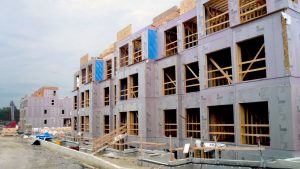OTTAWA — A new report by BuildForce Canada examines the current state of immigration policies across Canada and recommends the adoption of a series of consensus principles by governments to ensure the construction sector can better access skilled workers from abroad to address the labour shortage.
The report was developed with input from an industry steering committee consisting of representatives from Canada’s Building Trades Unions, the Canadian Construction Association, the Canadian Home Builders’ Association, Merit Canada and the Mechanical Contractors Association of Canada.
It found Canada’s immigration system favours university-educated applicants and if it doesn’t change, that may create challenges for the construction sector which depends on recruiting large numbers of individuals with trade certificates or other competencies that are currently overlooked in the immigration process.
Particularly in demand are technical trades and transportation officers and controllers (NOC Category 7), which collectively account for more than three-quarters of the total construction labour force.
They have struggled to obtain entry under Canada’s existing Express Entry system, a BuildForce release indicates.
The report recommends four guiding reform principles be adopted:
- Address educational bias in the Express Entry selection system. The system currently and disproportionately favours applicants with high education levels and effectively excludes others who possess the valuable skills or the willingness to work in construction that Canada requires;
- better align federal and provincial immigration policies and increase transparency. Immigration is a shared responsibility among the federal, provincial and territorial governments;
- ensure industry involvement in labour market planning, analysis and recruitment; and
- support competencies-based skills assessments for foreign credential recognition.
“Construction activity is projected to grow across the country over the next decade, driven by more than $450 billion worth of non-residential projects that are taking place across the country and renewed growth in the residential sector in the middle and later years of the 2020s,” said Bill Ferreira, executive director of BuildForce Canada, in a statement. “Our labour market information models, which do not take into account additional labour demands created by the impetus to build millions of new housing units or to meet Canada’s net-zero targets, suggest that the industry could face a recruiting gap of more than 85,000 workers by 2033.
“Closing this gap will require the industry to hire from a variety of sources, including from among the hundreds of thousands of new permanent and non-permanent residents that are projected to be admitted to Canada in the coming years. The difficulty is, the system does not currently support this objective.”











Recent Comments
comments for this post are closed